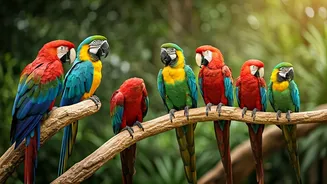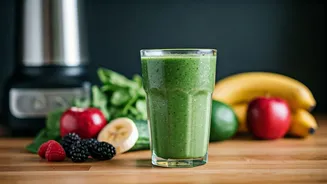Remarkable Cognitive Abilities
Parrots exhibit an astonishing level of intelligence, far exceeding what many people realize. Research has shown that they possess cognitive abilities
comparable to those of young children and even some primates. For example, parrots can solve complex problems, use tools, and understand abstract concepts. Their intelligence is most evident in their ability to learn and use language. Some parrots can acquire extensive vocabularies and even use words in context, demonstrating a comprehension of meaning beyond simple imitation. Furthermore, they are adept at problem-solving, often figuring out how to open complex locks or manipulate objects to achieve their goals. This cognitive prowess makes them fascinating subjects for scientific study and beloved companions for those who understand their intelligence.
Complex Social Structures
Parrots are highly social creatures, living in flocks that can range from a few individuals to hundreds. Their social structures are complex, with established hierarchies and intricate communication systems. Within these flocks, they engage in a variety of social behaviors, including mutual grooming, food sharing, and cooperative problem-solving. These interactions are crucial for maintaining social bonds, reducing conflict, and ensuring the well-being of the group. Different parrot species exhibit varying levels of social complexity. For instance, some species form strong pair bonds that last for life, while others live in larger, more fluid groups. Understanding these social dynamics is vital for both the conservation of wild parrot populations and the responsible care of pet parrots, as their social needs are often underestimated.
Lifelong Pair Bonding
Many parrot species form lifelong pair bonds, a behavior that underscores their commitment to partnership and social stability. These bonds extend beyond reproduction and serve as the foundation of their social lives. The bonded pairs engage in activities together, from foraging and roosting to mutual preening and defense. They communicate with each other through a variety of vocalizations and body language, reinforcing their connection. This strong bond contributes to their survival and reproductive success. The stability of these pair bonds is a testament to their emotional intelligence and commitment to long-term relationships. These birds often experience significant distress when separated from their partners, highlighting the importance of understanding and respecting their social needs.
Exceptional Mimicry Skills
The ability of parrots to mimic human speech is perhaps their most well-known characteristic. However, their vocal mimicry extends far beyond merely repeating words. They can learn to use language in context, understanding the meaning behind phrases and responding appropriately to different situations. This ability is rooted in their unique vocal anatomy, as well as the structure of their brains. They possess a specialized vocal organ called the syrinx, which allows them to produce a wide range of sounds. Furthermore, the brain regions responsible for vocal learning are highly developed in parrots. This combination of physical and neurological adaptations enables them to imitate not only human speech, but also sounds from their environment, such as the calls of other birds or the sounds of machines.
Diet and Feeding Habits
The dietary habits of parrots vary widely depending on the species and their natural habitat, however, their diets generally consist of seeds, fruits, nuts, nectar, and sometimes insects or small animals. Their strong beaks are perfectly adapted for cracking open nuts and seeds. They also have specialized tongues that help them extract nectar from flowers. In the wild, parrots spend a significant amount of time foraging for food, and their diet is a critical factor in their health and well-being. For pet parrots, providing a balanced diet that mimics their natural food sources is essential. This often includes a mix of seeds, pellets, fresh fruits, vegetables, and occasional treats. Understanding their dietary needs and providing appropriate food is fundamental for their health and longevity.
Longevity and Lifespan
Parrots are known for their long lifespans, with some species living for several decades, and larger parrots can even live for 80 years or more. Their longevity is a testament to their resilience and adaptability. Several factors contribute to their remarkable lifespans, including their relatively slow metabolism, their strong immune systems, and the absence of many of the environmental threats that affect shorter-lived animals. In captivity, proper care, including a healthy diet, regular exercise, and social interaction, can further extend their lifespans. This long life expectancy means that parrot ownership is a long-term commitment. It requires owners to be prepared to provide care and companionship for many years. With proper care, parrots can become cherished companions for a significant portion of a person's life.
Threats and Conservation
Many parrot species face significant threats in the wild, including habitat loss, illegal trapping for the pet trade, and climate change. Deforestation and habitat destruction have resulted in the reduction of suitable living areas. The demand for pet parrots has led to illegal trapping, and this has depleted wild populations. Climate change is also posing a threat, as it alters weather patterns and food availability, impacting their habitats. Conservation efforts are crucial to protect these vulnerable species. These conservation efforts include habitat preservation, anti-trapping campaigns, and captive breeding programs. Raising awareness about the importance of protecting parrots and supporting conservation organizations can play a significant role in safeguarding their future. The success of these efforts is essential for ensuring the survival of these magnificent birds.














